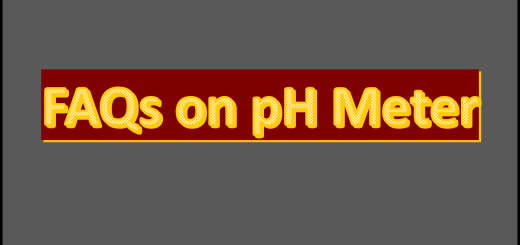UV Visible Spectroscopy- Comprehensive Guide
This article describes about UV Visible Spectroscopy, It’s principle, Usages, Major components, Types of Cuvettes, Limitations and Advantages
What is mean by UV Visible Spectroscopy
UV visible spectroscopy is a Technique that involves the measurement of the absorption or transmission of light by a sample in the ultraviolet (UV) and visible (Vis) range of the electromagnetic spectrum.
This technique is used to analyze the chemical structure of a sample by determining the wavelengths of light that are absorbed or transmitted by the sample.
The information obtained from UV visible spectroscopy can be used to identify and quantify the components of a sample and to determine its concentration.
What is mean by Spectroscopy ?
Spectroscopy is a Technique that involves measurement and analysis of interaction between matter and electromagnetic radiation. The Technique is based on the fact that matter absorbs, emits, or scatters light in a specific pattern depending on its chemical composition and physical properties.
What is the principle of UV Visible Spectroscopy ?
The principle of a UV visible spectrophotometer is based on the Beer-Lambert law, which states that the ”amount of light absorbed by a sample is directly proportional to its concentration and the path length of the light through the sample”.
What is mean by Lamberts Beer law ?
Beer law : Absorbance is directly proportional to concentration of sample (A α C )
Lamberts law : Absorbance is directly proportional to path length of shell (A α L)
Lamberts Beer Law : Absorbance is directly proportional to Concentration and Path length of Shell (A α CL)
What is mean by Path Length ?
Cuvettes length is called Path Length.
(From where The length of light is Transmitting i.e. If the distance travelled by Light in shell increases, there will be increase in absorbance )
What is the use of UV Visible spectroscopy in pharmaceutical industry?
Yes, UV-Vis spectroscopy is commonly used in the pharmaceutical industry for both qualitative and quantitative analysis of drugs.
In the pharmaceutical industry, UV-Vis spectroscopy is used for analysis of drug substances and drug products. Another important application of UV-Vis spectroscopy in the pharmaceutical industry is the determination of the purity of a drug substance. By comparing the absorbance of a sample with that of a reference standard, it is possible to determine the purity of the sample.
For example, it can be used to quantify the amount of a drug substance in a given sample or to identify impurities in the drug substance.
What are the Major Components available in UV Visible Spectroscopy ?
- Light source
- Monochromator
- Sample Holder
- Detector
- Recorder
What is Difference between Ultraviolet and Visible Range in UV Visible Spectroscopy?
The UV Range Is 200-400 nm and Visible Range is 400- 800 nm.
What Types of Cuvettes used in UV visible spectroscopy?
Different types of Cuvettes are used in UV Visible Spectroscopy some of the commonly use cuvettes listed as below
- IR quartz Cuvettes
- UV Quartz Cuvettes
- Optical Glass or Pyrex Glass cuvettes
Which Type of cuvettes used for UV Range and for Visible range?
During usage of UV Range Transmission , Quartz Type Cuvettes can be Used and During usage of Visible Range Transmission Glass Type Cuvettes can be Used.
Reason why Different MOC cuvettes used in UV and Visible Range ?
Quartz cuvettes will not absorb the UV light in other hand Glass Cuvettes will absorb UV light approx. 100 to 200 nm and will not get the accurate results. So for UV light Testing Quartz Cuvettes are using for sample analysis.
What is measuring unit of the UV Visible Spectroscopy ?
The unit is the “absorbance”
Note: Light is Transmitting and converting it in to Absorbance .
What is light source In standalone UV Spectroscopy ?
Deuterium lamp is used to Emit UV light in standalone Ultraviolet spectroscopy.
What is light source In standalone Visible Spectroscopy ?
Halogen Lamp is used to emit the Visible light in standalone Visible spectroscopy.
Which are the lamp used in the Ultraviolet Visible Spectroscopy?
Xenon Lamp emits both lights i.e. ultraviolet and visible light and that is used in UV-Vis (Ultraviolet Spectroscopy)
Why this Technique is called UV Visible Spectroscopy:
In this Techniques UV Visible light used for electromagnetic Radiation because of this it is called UV visible Spectroscopy ?
What are the advantages of using UV-Vis Spectroscopy?
UV Visible Spectroscopy requires minimal sample preparation time. It is a simple and rapid method that can be used for a wide range of applications. Additionally, UV-Vis Spectroscopy is a relatively low-cost analytical method, and it is widely available in many laboratories.
What are the limitations of UV-Vis Spectroscopy?
UV Visible Spectroscopy is not suitable for the analysis of all types of compounds. It is often limited by the sensitivity of the detector, and interference from other substances in the sample can affect the accuracy of the analysis. Additionally, UV Visible Spectroscopy cannot determine the structure of a molecule, only its electronic transitions.
Note :
Spectroscopy/Spectrophotometer/Spectrometer are like synonyms
Ultra Violet (UV) Visible spectroscopy can be termed as Ultra Violet (UV) Visible spectrophotometer or Ultra Violet (UV) Visible spectrometer.


